|
Di seguito tutti gli interventi pubblicati sul sito, in ordine cronologico.
Cancer scientists have recently turned their attention to a class of chemicals called cannabinoids. While marijuana is a well known source of cannabinoids – including THC and CBD – the body also produces some of its own.

The team, led by Barbara Adinolfi, Ph.D, a postdoctoral researcher at the University of Pisa’s Department of Pharmacy, conducted experiments using one of these natural cannabinoids, anandamide (AEA), and human melanoma cells.
Their findings, published online in the European Journal of Pharmacology, showed anandamide had a toxic effect on cancer cells – even in small doses.
Overall, these findings demonstrate that AEA (anandamide) induces cytotoxicity against human melanoma cells in the micromolar range of concentrations.
Interestingly, the role of endocannabinoids – ‘endo’ stands for endogenous (i.e. made by the body) – in controlling cancer is not a new discovery.
As the authors note, endocannabinoids have been shown to “regulate both core and emerging hallmarks of cancer.” Previous studies show that the body produces more endocannabinoids in cancer and pre-cancer states.
But very few groups have studied their action in the case of skin melanoma – one of the most aggressive human cancers, according to the authors. And while cannabinoids seem to have a general anticancer effect against many cancers, their mechanisms of action have not been consistently identified.
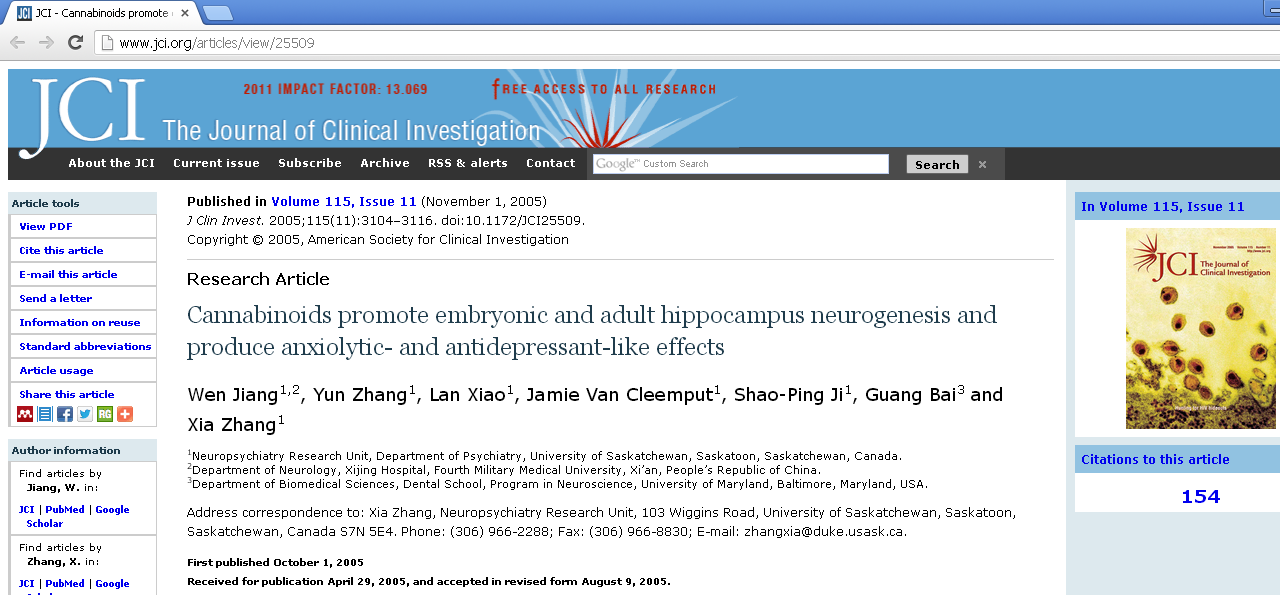
In vitro and in vivo studies have shown that natural and synthetic cannabinoids are efficacious in reducing cancer progression, although the observed effects are complex and sometimes contradictory.
In the latest study, the authors were able to pinpoint mechanisms involved with anandamide’s anticancer activity. Unsurprisingly, activation of pathways that facilitate the effects of marijuana, CB1 receptors, played a major part.
While more studies need to be done, cancer researchers have been looking at ways of increasing natural cannabinoid levels or delivering plant-derived cannabinoids to targeted areas as new cancer therapies.
Skin cancer is often treatable with surgery, but more aggressive forms can spread quickly and are known to be resistant to traditional chemotherapy.
The study was published ahead of print and received funding from the Italian Anti-melanoma Association
Source: LeafScience.com
Q: You’ve published a lot of research and articles on medical marijuana. What influence has it had on your medical training?
I’m in my fourth year of residency and I see it becoming more and more relevant to my resident life as I go along. I’m also educating my peers about cannabis, because it’s relevant to my field, rehabilitation medicine, as well as pain management and palliative care – and those are all things that I’m interested in.
Next year, after I finish here in New York, I’m going to the National Institutes of Health (NIH) for a one year fellowship.
It’s the largest research hospital in the world and another place, like New York, where it’s too bad that a simple cannabis botanical is so hard to study and use. That’s something I’m interested in trying to question and push.
Of course, since the NIH is the heart of the federal system and the federal government considers cannabis a Schedule I drug – meaning it has no recognized medical use – it just creates a big political headache for them.
It’s really sad that they put politics ahead of science, even at the world’s largest research hospital.
Q: How is cannabis relevant to the field of rehabilitation/palliative medicine?

Most of the highest level of clinical evidence for cannabis – either inhaled or orally ingested – is for the palliation of certain diseases.
For example, pain and nausea in cancer, appetite loss and wasting in HIV/AIDS, and spasticity in multiple sclerosis. If these patients were to receive cannabis in the real world, a palliative doctor could be the one doing that. For these serious, life-limiting illnesses, cannabis has been shown to be effective.
And there’s a lot of other data – lower level, but still really compelling – for other palliative indications too.
The other interesting thing is the area of actually dying.
When you’re in a hospice and you have 6 months to live, is it possible for cannabis to be used? Let’s say you have pain and still want to be present with your loved ones before you pass away. Is it possible to not be completely sedated and looped out on opioids by adding cannabis into the mix?
Those are some of the topics I’ve covered in my work. In some of these cases, you don’t really need a whole stack of clinical trials. It just makes sense – it’s reasonable to do and we should just do it and have it available.
The American Academy of Hospice and Palliative Medicine actually gave me an award earlier this year at their annual meeting for my poster on cannabinoid medicines. Several of my articles have also been accepted in palliative journals.
Q: Does it have potential in other areas of medicine as well?
Of course, cannabis also has disease modifying potential. It’s not just palliative, it’s also curative.
I think some really interesting stuff is coming out in that area. It’s not just like we can potentially help with your MS [multiple sclerosis] pain, but maybe we can slow your MS down. That’s very exciting.
There are many promising areas. Dr. Sanjay Gupta’s documentary covered its potential in treating a lot of cancers, and there’s neurodegenerative diseases like Alzheimer’s, recovery from stroke and brain injuries, inflammatory bowel disease, etc.
Q: Cannabis seems to be quite popular in pain management. How does it compare with other pain drugs?
It’s very variable. In some types of pain like in post-operative settings, THC didn’t seem to be as effective as other traditional opioids used. But I’ve also seen other studies of acute pain where they said that THC was just as effective as codeine.
In chronic pain, it’s really interesting. For example, in HIV neuropathy – a special type of pain in the nerves that HIV patients get – there are a number of studies where cannabis has been tested in a randomized, double-blinded, placebo-controlled fashion. Turns out that when you compare all the other treatments that we know of in the world and have been studied in this condition, cannabis beats them.
It has what is called a lower number needed to treat (NNT), which is a term we use in evidence-based medicine for the number of patients that need to be treated to achieve a positive response in just one. The NNT for herbal cannabis in HIV neuropathy is the lowest of all studied therapeutic interventions for that condition. So for that particular condition, we have the best evidence that cannabis is the most effective.
There are also studies that have been done involving experimental pain in healthy people and then they give them herbal cannabis cigarettes of various strength verses placebo to see if their pain has gone down or not.
Turns out there’s kind of a ‘Goldilocks’ phenomenon. In some of the higher potency preparations patients report increased pain, in lower preparations they report a little bit of pain relief and in the medium dose they report superior pain relief.
So there are some cases where less is more – if you take less, you have better pain relief. So dosing does matter.
In terms of chronic, difficult-to-treat pain conditions, I think Dr. Donald Abrams has said that if you can get greater than 30% relief of pain, you’ve met a certain standard. And cannabis has been shown to achieve that standard in nerve pain.
What’s really amazing – you’ll see in those studies – sometimes just after one puff, patients’ pain scores will drop by something like 70 to 80%. It’s quite remarkable, although I’m not talking about aggregate analysis, but by individual. Then again, medicine is about taking care of the individual person. So for those people, cannabis is working like no other drug that they’ve taken before. It’s very promising.
Q: What do you think about the criticism that medical marijuana has received because of the large number of prescriptions written for pain?
People who say that have no good training in medicine. Because once you dig into the patients’ charts, look at their histories and examine them – you understand the correlations.
But there’s certainly a physiological dimension of pain, and I think there are ways of treating pain without drugs. So it’s certainly not the only way to treat pain, but it’s certainly a lot less toxic to the body than other stronger medicines. You can’t die from it, whereas you have this massive epidemic of people dying from other pain medicines.
Pain is not taken seriously as a legitimate condition. In many of these states in the U.S. where cannabis has recently been legalized for medical use, they’ve been excluding pain as a diagnosis because of the politics of pain.
I think it’s a sad testament. I mean some people will fake pain, but that’s been happening forever. But the vast majority of people will not do that and you can’t punish the vast majority of people because of a few.
Eventually, people won’t feel the need to pretend they’re in pain to see a doctor. Their government will have figured out that if people want to use this and they’re adults than it’s probably okay, because we let them use alcohol and tobacco anyway and this is probably safer for them.
Q: Not many doctors are outspoken about their support for medical marijuana. Why is that?
The fact is there have been more than 10,000 physicians in the U.S. who have participated in medical cannabis programs – who are treating their patients and authorizing their patients to use it.
I think being a doctor is a conservative profession. I think it has become the way that we use what’s in our pharmacies. How do you take care of patients? Well, what do we have? That’s how we take care of them [laughs].
It’s sort of a necessity thing. There aren’t a lot of doctors out there trying to look for new drugs. We use what we’ve learned – or are learning now from pharmaceutical reps who come and say (x) is now available.
But with Dr. Gupta coming out and everything – it’s certainly changed my own father’s attitude, who is a physician and was pretty much neutral or on the negative side of it. But having seen a very established, prominent neurosurgeon coming out in favor of it has changed his view.
And if there is some value to my speaking and writing, I’ll keep doing that because I think there is a lot of good we can do with it if we’re responsible.
Q: Is there anything being taught in medical school about marijuana and the endocannabinoid system?
I started medical school in ’02. There were a few mentions, I have to say, in my curriculum of endocannabinoid signaling.
Certain professors would bring it up in reference to G-protein coupled receptors in the retina or the brain. And someone else would mention it in terms of chronic pain syndromes. Now that I recall, neither of those professors were MD’s, they were Ph.D’s.
There was one professor who was an MD/Ph.D – a psychopharmacologist – who mentioned it. He was just talking about the usual marijuana abuse stuff and how it works through the CB1 receptors.
But nobody is saying this is a widespread, homeostatic modulatory system which has the most prevalent neurotransmitter in the brain on a per second basis and regulates mood, appetite, memory, pain, inflammation, muscle relaxation, bone remodeling, reproduction, etc.
You could do that. You could teach that, but so what? How can I use that in my practice? Well, you can prescribe a medicine that your patients can’t get access to [laughs].
Actually, that’s not even true. You can also stimulate the endocannabinoid system through running, osteopathic treatments, and acupuncture. It could be understood in a much more widespread fashion, so there is definitely a huge gap there to fill. That’s why I’ve been publishing papers and I’ve written some textbook chapters, but there has to be more thorough curricular work done.
I think doctors are also going to learn a lot of this from their own patients – it’s coming from both directions.
The public has sort of been forced to learn about it as well, so it’s not just about training the doctors. If cannabis can also be available without prescription or if people can use it on their own without having to go see a doctor without a prescription, the public will have their own incentive to learn as responsible health consumers.
So I think it’s going to be both parties – patients and doctors – that will have to get up to speed.
Q: What do you see yourself being involved with in the future?
It really depends a lot on what happens in the next two years and where we are policy-wise.
I think I’ll always have one foot in some sort of academic setting because you can ask certain questions and be involved with furthering knowledge and also have access to research funds and staff.
But I’m also interested in policy. Not just being a clinician, but also being a person that helps to guide how people can set these programs up or make cannabis more easily available – and changing international laws so that in other countries in the world it can be more available.
I’m also interested in the availability of other medicines in general. Opioids are actually important too, but they’re extremely hard to get in other parts of the world where people have severe pain that cannabis isn’t going to be the only thing that can help.
Another one of my interests is psychedelic medicine – like the therapeutic potential of psychedelic mushrooms – but that’s a whole other discussion. It’s another drug or botanical that’s gotten a severely bad rap and is also classified as Schedule I.
One of the things I’m really trying to get my mind around is the whole spiritual use of cannabis, because I think there’s something about the human-environment relationship that gets neglected in these discussions.
That is to say that cannabis is a plant and humans have been interacting with plants for eons. It’s a member of the plant kingdom and how humans connect to the plant kingdom is going to be increasingly important – especially in this day and age of global warming and fossil fuel burning.
We’ve got to get more green. Anything that can help facilitate the human-plant relationship might have some spiritual or holistic angle. I want to try and foster that kind of thinking, although I’m not sure about how just yet.
Dr. Sunil Aggarwal is a graduate of the MD/Ph.D program at the University of Washington and is currently in his last year of residency at a large academic medical center in New York City. He is the author of a number of research papers on medical marijuana, which are compiled on his website.
Dr. Aggarwal is also a board member of Americans for Safe Access Foundation, Patients Out of Time, and the Center for the Study of Cannabis and Social Policy
Source: LeafScience.com
That’s unfortunate, because cannabichromene is actually the second most abundant cannabinoid in marijuana, which means there is likely more CBC in your cannabis than CBD – even though CBD seems to get all the attention.
But research over the decades highlights a number of reasons why you should take notice of this non-psychoactive compound. Here’s 5 of them:
1. Fights Bacteria and Fungi
One of the earliest studies involving cannabichromene was published in 1981 by the University of Mississippi.
In the study, researchers found that CBC exhibited "strong" antibacterial effects on a variety of gram-positive, gram-negative and acid-fast bacteria – including E. coli and staph (S. aureus).
CBC showed "mild to moderate" activity against different types of fungi too, including a common food contaminant known as black mold (Aspergillus niger).
2. Anti-inflammatory Properties
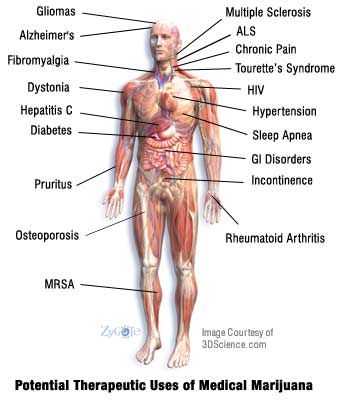
Recent animal studies show CBC can reduce edema (swelling) as well as inflammation of the intestinal tract.
Interestingly, CBC appears to fight inflammation without activating cannabinoid receptors. This could explain why CBC produces a stronger anti-inflammatory effect when combined with other cannabinoids like THC.
3. Relieves Pain
Cannabichromene has also been found to reduce pain in animal models, although its effect may not be as strong as THC.
However, a study published in 2011 concluded that CBC and CBD could both fight pain by "interacting with several targets involved in the control of pain" at the spinal level.
Since CBC and CBD are both non-psychoactive, scientists are hopeful that these marijuana compounds can be used to treat pain – without the high.
4. Fights Depression
A more recent study from the University of Mississippi identified a significant antidepressant effect of cannabichromene in rat models, concluding that CBC and a number of other cannabinoids may "contribute to the overall mood-elevating properties of cannabis."
Scientists are still trying to figure out more about how CBC does this, since it doesn’t seem to activate the same pathways in the brain as THC.
5. Stimulates Brain Growth
The latest research on CBC – published just last month – highlighted one of the most unique benefits of this compound: It may actually help your brain grow. Specifically, CBC appeared to increase the viability of developing brain cells – a process known as neurogenesis.
Contrary to popular belief, neurogenesis doesn’t stop once you reach a certain age. However, it only occurs in a specific part of the adult brain called the hippocampus. The hippocampus is important for memory and learning and a lack of growth in this area is believed to contribute to a number of disorders, including depression and Alzheimer’s.
While cannabichromene’s ability to promote neurogenesis is a very recent finding, previous studies suggest THC and CBD can do the same.
As Dr. Xia Jiang of the University of Saskatchewan – one of the first scientists to uncover this remarkable effect of marijuana – explained in an interview with Science Daily:
"Most ‘drugs of abuse’ suppress neurogenesis. Only marijuana promotes neurogenesis."
Opiates, alcohol, nicotine, and cocaine are all known to inhibit brain growth. Thankfully, CBC and other chemicals in marijuana seem to have the opposite effect.
Source: LeafScience.com
GW Pharmaceuticals – the UK-based company behind the natural cannabis spray Sativex – announced the start of the first round of clinical trials of a new cannabis treatment for epilepsy.

In the press release, Dr. Stephen Wright, Director of Research and Development at GW, said the company has spent years testing cannabis in pre-clinical models – which include cell cultures and animals.
So far, the drug is only known as GWP42006.
"We are pleased to have advanced GWP42006 to first dose in man, a significant milestone in the development of this novel product candidate. The decision to progress into Phase 1 follows several years of highly promising pre-clinical research."
Dr. Ben Whalley, Senior Lecturer in Pharmacology at the Reading School of Pharmacy, added, "Our research collaboration with GW over the last several years has shown that GWP42006 not only exerts significant anticonvulsant effects in a wide range of preclinical models of seizure and epilepsy but is also better tolerated compared to existing anti-epileptic drugs."
While the company has not disclosed the ingredients in the new drug, their latest animal study – which appears in the October issue of the British Journal of Pharmacology – showed positive results with two chemicals derived from cannabis: Cannabidiol (CBD) and cannabidivarin (CBDV).
Both were found to suppress seizures and increase survival across a range of different rat models of epilepsy.
And while previous studies have achieved similar results using THC – the chemical in marijuana responsible for the high – the advantage of using CBD and CBDV is that neither are psychoactive.
In particular, many epileptic patients have reported success with CBD, including the family of Charlotte Figi – a six year old girl from Colorado who once suffered from up to 300 grand mal seizures a week caused by Dravet syndrome – a rare, severe form of epilepsy that begins during infancy.
As reported in a recent CNN documentary called WEED, after Charlotte began taking daily doses of CBD-rich cannabis oil – which is legal in her home state – Charlotte's seizures dropped to only a few each month.
But the absence of clinical research means that even patients as young as Charlotte – who are most at risk of suffering permanent disability – face resistance from their doctors when requesting cannabis-based treatment.
While filming WEED, CNN's Sanjay Gupta visited Charlotte Figi's medical marijuana provider, Joel Stanley, at his farm in Colorado. Joel crossbred a CBD-rich strain specifically for his youngest patient, which he named Charlotte's Web.
However, with medical marijuana now legal in over 20 states, the push for more research has led to new progress in the U.S. as well.
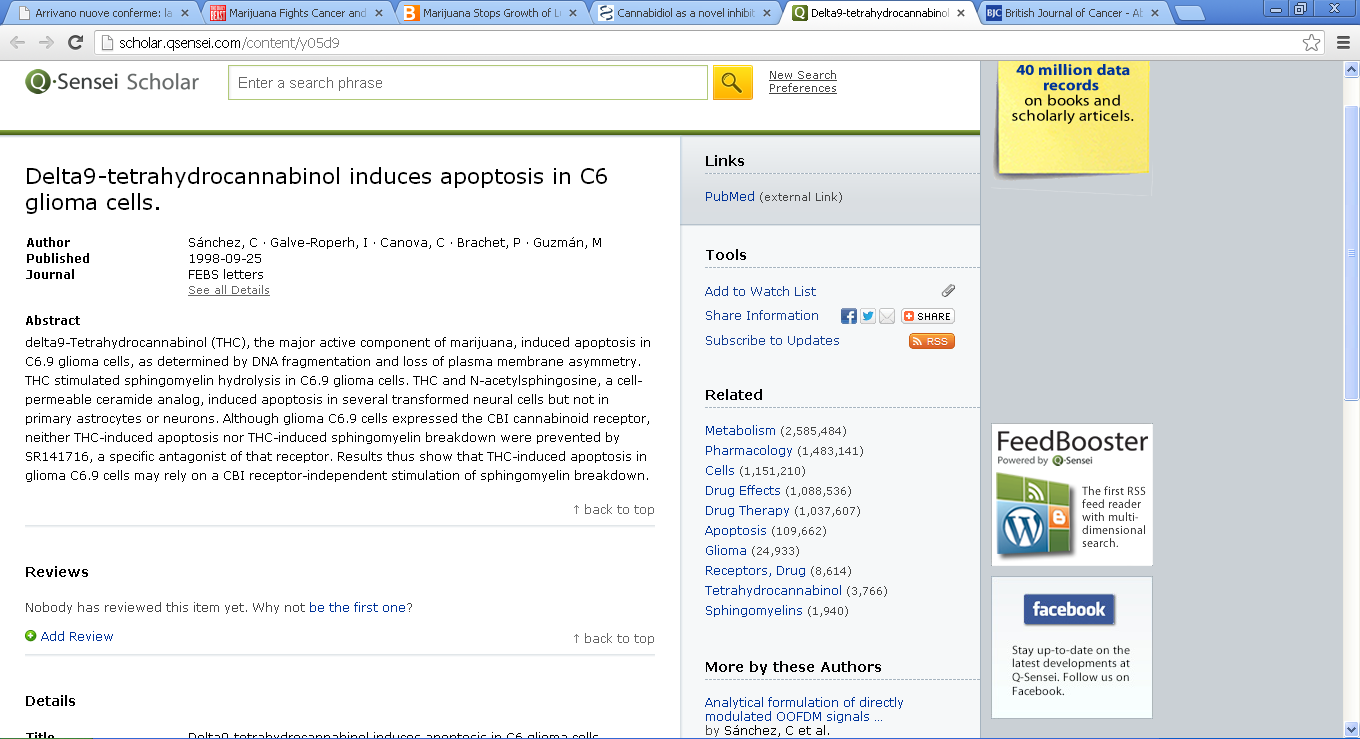
In July, Dr. Orrin Devinsky, Director of the Comprehensive Epilepsy Center at New York University, told the Toronto Star that he had just received FDA approval for a clinical trial of CBD in children with epilepsy.
He said that there isn't much doctors can do at the current time since "we really lack much data," but noted the attention that medical marijuana has received from families of younger patients.
"I've spoken with these parents, and I think they're solid, good, loving parents, who've had very good experiences."
According to Dr. Devinsky, if results from animal studies are confirmed and there are no setbacks, CBD could be approved in the U.S. in two to three years.
But with decades of pre-clinical research (and even a few small human trials) providing support for marijuana's ability to control epileptic seizures, approval couldn't come soon enough.
Source: LeafScience.com
Hemp has always been a cash crop. Fuel may be the most important product you can get from hemp for our growing energy needs, but there are literally thousands of different products you can make from hemp. From clothing, to makeup, to biodegradable plastics, it's pretty much a miracle plant.
It has 4x the yield of tobacco, is incredibly resilient to changes in environment and it grows very quickly. I would argue that hemp would be a staple in any sustainable society. It's really a shame that it's illegal in the US.
Have you been playing a Rubik's Cube for hours but still could not get it off your hand? Now you can experience its irresistible charm online! In this game, your goal is to rotate the sides of the cube until each of the sides contains blocks of the same color. You will be given a cube which is built by multiple color blocks, and each of the sides contains 9 blocks.
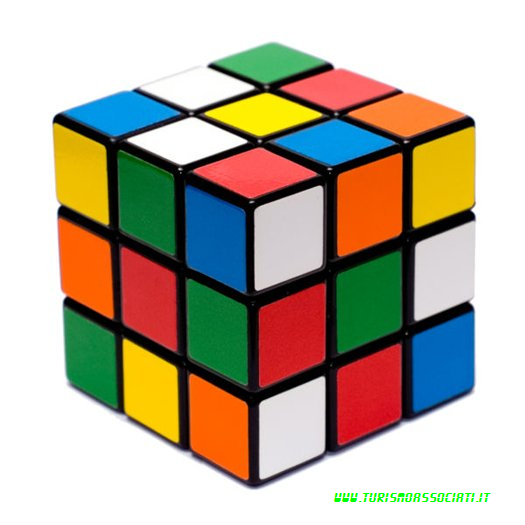
You can click the arrows next to the cube to rotate, or click and drag the cube to change its orientation. Continue the process until each of the sides is composed of blocks of the same color, and you can win the game. The amount of time you have spent and the current number of moves are counted at the top left corner of the screen. Can you clear the mist with patience and logic?
The world has waited with bated breath for three decades, and now finally a group of academics, engineers, and math geeks have finally found the magic number. That number is 20, and it's the maximum number of moves it takes to solve a Rubik's Cube.
Discover how to solve the cube using only 5 moves in this short step by step video. Complete notation as well as an example of cube solving in under 2 minutes is included.
Known as "God's Number", the magic number required about 35 CPU-years and a good deal of man-hours to solve. Why? Because there's 43,252,003,274,489,856,000 possible positions of the cube, and the computer algorithm that finally cracked God's Algorithm had to solve them all. (The terms "God's Number/Algorithm are derived from the fact that if God was solving a Cube, he/she/it would always do it in the most efficient way possible.)
Red more: http://www.turismoassociati.it/dblog/articolo.asp?articolo=1154
Now a team of German scientists has found evidence that a lack of marijuana pathways in the brain may contribute to symptoms of Alzheimer’s disease.
These pathways – known as cannabinoid receptors (or CB1 receptors) – are found throughout the brain and are responsible for the high that marijuana gives. The researchers concluded that targeting these pathways may be effective at reversing some of the cognitive problems in patients with Alzheimer’s.

Their results will be published in the November journal of Neurobiology of Aging.
The findings indicate that CB1 deficiency can worsen AD [Alzheimer's Disease]-related cognitive deficits and support a potential role of CB1 as a pharmacologic target.
CB1 receptors are part of the brain’s endocannabinoid system, which also include naturally produced chemicals that mimic the effects of marijuana. These chemicals, called cannabinoids, regulate a wide variety of cognitive functions.
In the study, researchers compared rats with Alzheimer’s and found that those with a loss of CB1 receptors had more severe problems with learning and memory. They also had lower body weights and higher rates of premature death.
Other studies have identified lower levels of CB1 receptors among human subjects with Alzheimer’s, suggesting that this may be a natural effect of the disease.
What’s more, previous animal studies have found marijuana-based treatments effective at reversing both the symptoms and underlying factors of Alzheimer’s.
Despite its promise, human trials of marijuana have yet to be conducted, even as the disease becomes increasingly common.
Without a breakthrough in treatment, the number of Alzheimer’s cases are expected to triple over the next 50 years.
The study was published ahead of print and received funding from the DFG research group.
Source: TruthOnPot.com
What scientists now know is that anorexia actually leads to changes in the brain – specifically in pathways connected to marijuana.
These pathways are part of the endocannabinoid system, which include natural marijuana-like chemicals (cannabinoids) and the receptors that they bind to.
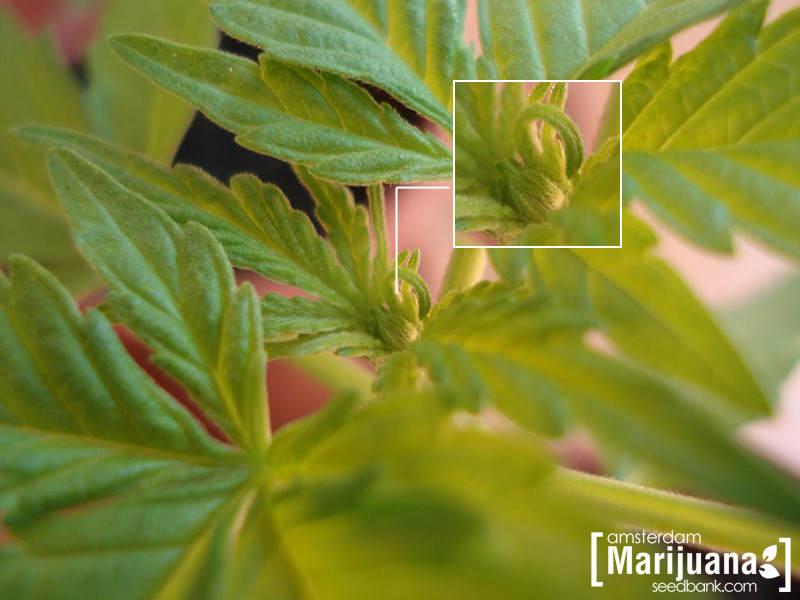
Last week, a team of Belgium researchers published more evidence of this relationship from a “well-known rodent model” of anorexia nervosa.
Their findings appear online in the European Journal of Nuclear Medicine and Molecular Imaging.
These data point to a widespread transient disturbance of the endocannabinoid transmission, specifically for CB1 receptors in the ABA model [activity-based rat model of anorexia].
They also concluded that a change in the brain’s cannabinoid system likely takes place as an effect – rather than a cause – of anorexia.
Specifically, their findings suggest that the body creates more receptors to compensate for a “chronically hypoactive” endocannabinoid system in cases of anorexia. But these changes may only be temporary, since receptors rebounded to normal levels after the experiments stopped.
Like marijuana, chemicals that make up the endocannabinoid system act as regulators of appetite.
Some scientists believe that the body may produce lower levels of these chemicals in order to improve the ability to survive during periods of “prolonged starvation” – or anorexic states.
That is, patients with anorexia may experience a natural decrease in appetite because of changes that occur in the brain.
Although yet to be tested in anorexia, the authors note that marijuana has been shown to increase food intake in other patient groups.
Cannabis and cannabinoid agonists with minimal psychoactive side effect profile have been used as eating stimulants in acquired immunodeficiency syndrome (AIDS) or cancer patients.
Unfortunately, treatment options are limited when it comes to anorexia and full recovery is seen in only 40-50 % of patients, according to the authors.
They hope their latest findings will lead to a better understanding of how marijuana-based treatments may be used to help patients recover from the eating disorder.
The study was published ahead of print and received funding from the Research Council of the Katholieke Universiteit Leuven, the Fund for Scientific Research, Flanders, Belgium, and the K.U. Leuven Molecular Small Animal Imaging Center
Source: TruthOnPot.com
Scientists found that pathways in the brain associated with marijuana (cannabinoid receptors) were also responsible for the effects of a chemical called minocycline.
The results were released last week in the Oxford journal Cerebral Cortex.
Our findings confirm that minocycline decreases brain damage caused by traumatic brain injury… the activation of cannabinoid receptors is required for the neuroprotective actions of this compound.
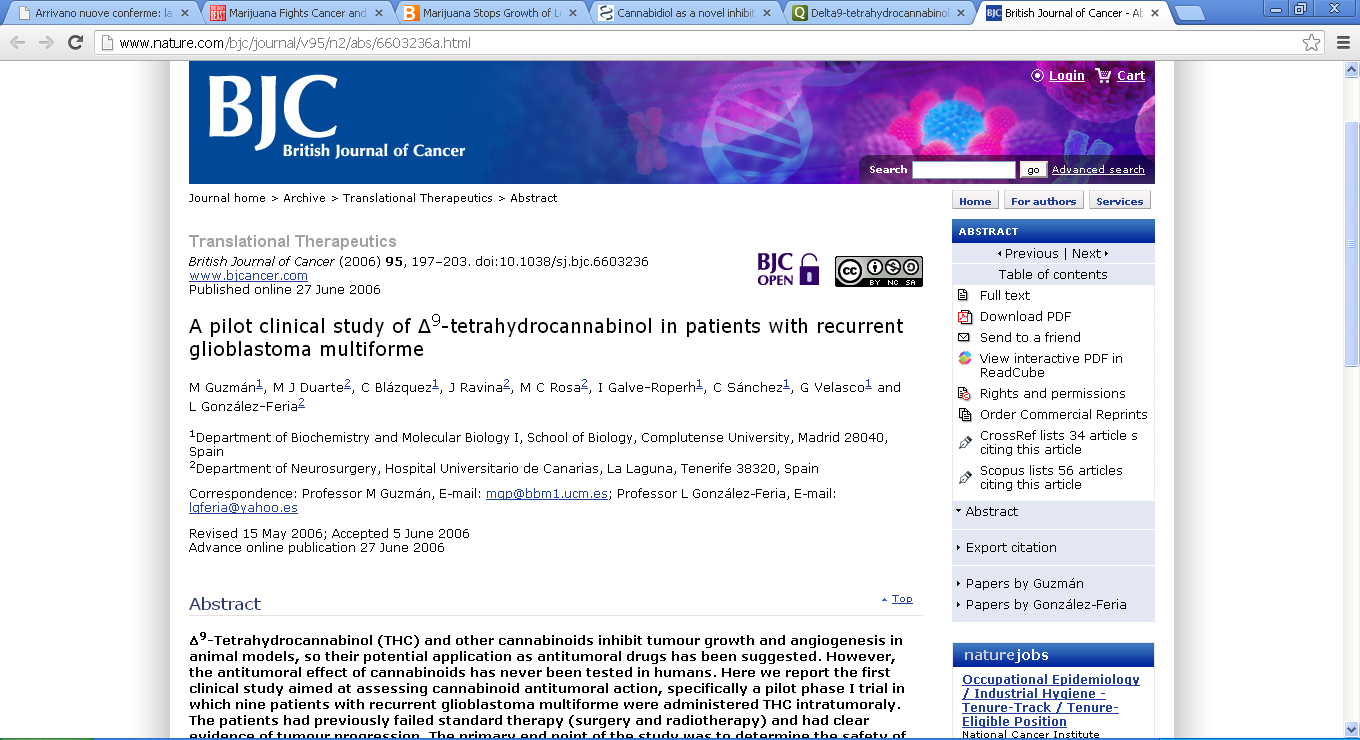
Inflammation is believed to contribute to brain damage that occurs after a head injury. Earlier studies show that minocycline can protect against this damage.
However, when researchers from the Complutense University of Madrid gave minocycline along with chemicals that block the activity of cannabinoid receptors, its protective effects were prevented.
Interestingly, other studies suggest that marijuana may play a direct role in protecting against brain damage – including research by Professor Yosef Sarne of Israel’s Tel Aviv University.
While still in its early stages, Prof. Sarne told Science Daily that the main chemical in marijuana, THC, showed incredible promise.
THC could be applicable to many cases of brain injury and be safer over time.
THC’s anti-oxidant and anti-inflammatory properties are thought to protect the brain from further damage following injury.
While THC is also responsible for the marijuana high, Prof. Sarne found it offered significant protection at doses 1,000 to 10,000 times less than that in an average marijuana joint.
The study was supported by GRUPOS UCM-BSCH 951579; Delegación del Gobierno para el Plan Nacional sobre Drogas; Instituto de Salud Carlos III; Redes temáticas de Investigación Cooperativa en salud, Red de Trastornos Adictivos; Ministerio de Economía y Competividad, Spain, and the nonprofitable organization Fondation des Gueules cassées.
Source: TruthOnPot.com
Jacqueline Patterson was born with cerebral palsy, a congenital disorder that affects her motor functions. As a result of her condition, she suffers from a severe stutter and major pain and weakness on her right side. This video showcases the amazing effect of cannabis on her condition.
Cerebal Palsy is an umbrella term encompassing a group of non-progressive, non-contagious motor conditions that cause physical disability in human development, chiefly in the various areas of body movement - Wikipedia At some point very early in life, either while a baby is still growing in the womb, during birth or shortly after, something happens to interfere with the normal development of the brain or to injure the brain tissues. This abnormal development or injury disrupts the nerve signals between the brain and the muscles, leading to problems with movement, posture and coordination as the child grows up. While some people are severely affected, others have only minor disruption, depending on which parts of the brain are not functioning properly. It's estimated that as many as 1 in every 400 children may have cerebral palsy. - BBC Health As a mother she doesn't want her disability to affect her relationship with her children, so she's sought out alternative treatment for her disorder. She's found that cannabis is the most effective treatment for her stutter. However if she's caught buying or smoking marijuana she could lose custody of her children. So, she drives the streets of Kansas City looking for pot. Jacqueline says it's worth the risk because the pain she endures makes her feel as though she's "half the mother" she wants (and needs) to be for her children. After Jacqueline was reported for cannabis possession in Iowa, she moved to California and won a court case arguing that her consumption of marijuana was strictly for medicinal purposes. Hit up Jacqueline on Twitter @ medicalmaryjane. For the full documentary, watch In Pot We Trust, which covers "a range of medical, social and political views and the medical purposes of marijuana in relation to Glaucoma, Leukaemia, Multiple Sclerosis, Multiple Exostoses and Post-Traumatic Stress Disorder."
|